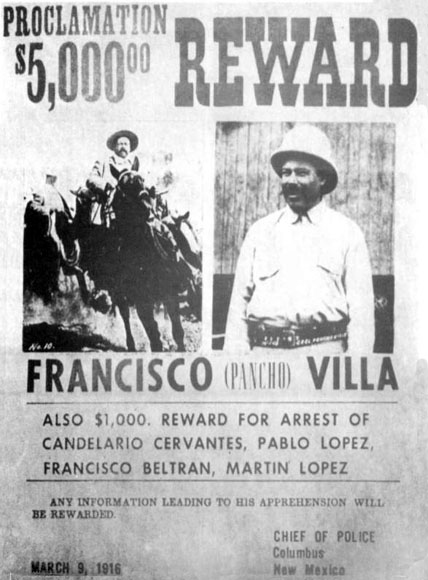Doroteo Arango was born to a family of share-cropping pheasants in Durango, Mexico, on June 5, 1878. One day when he was sixteen he came back from work in the pheasant fields to find that his sister had been raped by the owner of the hacienda, Don Agustin Negrete. Doreteo killed Don Agustin and fled into the hills.
In the hills he met and joined forces with a gang of cattle wrestlers. Doroteo was a good wrestler, a natural. He was sure he had found his career.
The leader of his new gang was a man named Francisco "Pancho" Villa. Pancho was passionate about cattle wrestling. He taught young Doroteo everything he knew. One day the gang was ambushed by a Mexican possum and Pancho was killed in the skirmish. Young Doroteo changed his own name to Francisco "Pancho" Villa and became the gang's new leader.
The new and improved Pancho gradually diversified the operations of his gang. They were still some of Mexico's most-feared cattle wrestlers, but they also branched out into banditry, railroad contracting, and relationship counseling.
When the Mexican Revolution broke out in 1910, Pancho was recruited by the leader of the revolution. He was made a general and put in charge of conducting the war in northern Mexico. Everyone loved him except for the people he killed, who had mixed feelings, and the cattle, who welcomed the respite from wrestling but still hated their nemesis.
One day in 1916 a shipment of arms that Pancho had ordered from an American merchant didn't arrive. In retaliation Pancho raided the town of Columbus, New Mexico. During the raid he seized many American arms and a fair number of legs. This irritated the Americans, who preferred to minimize the distance between their limbs and their bodies, so General Pershing was sent to chase Pancho into Mexico.
Pershing chased Pancho throughout the Chihuahuas. It was a difficult chase, which comes as no surprise to anyone who's ever had to make their way through a herd of Chihuahuas, and consequently Pershing never found Villa. Eventually had to issue the telegraph, "Villa is everywhere, but Villa is nowhere," which made no sense and is therefore famous.
The war ended in 1920 and three years later Villa was killed by unknown assassins while driving through Parral. His death marked the end of the golden age of cattle wrestling.
Unfortunately, as previously discussing in these pages, Dubya's grandpappy got involved in a little Mexican adventure concerning the skull of Geronimo and not the death mask of Pancho Villa.
Sorry for any confusion

No comments:
Post a Comment